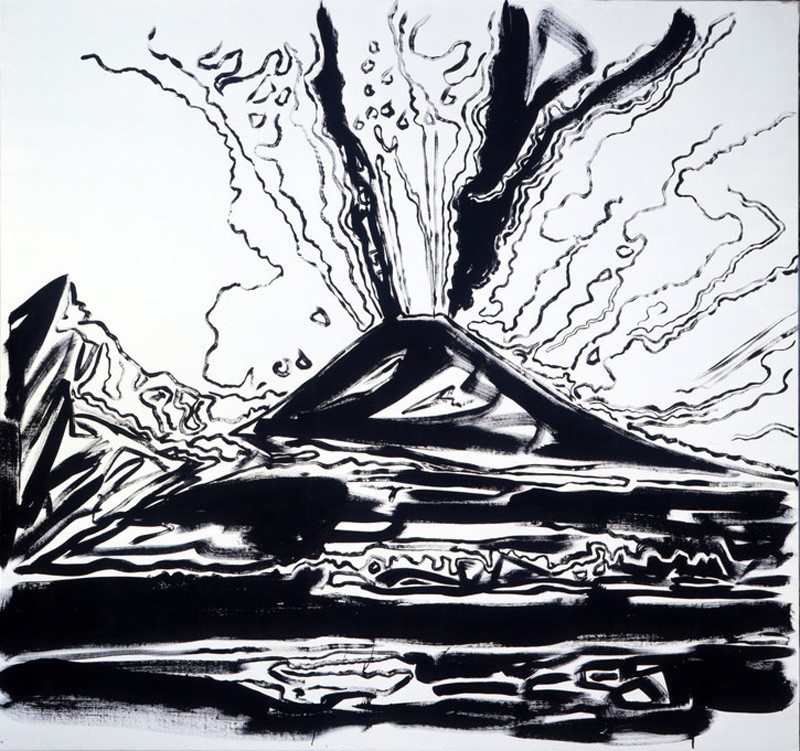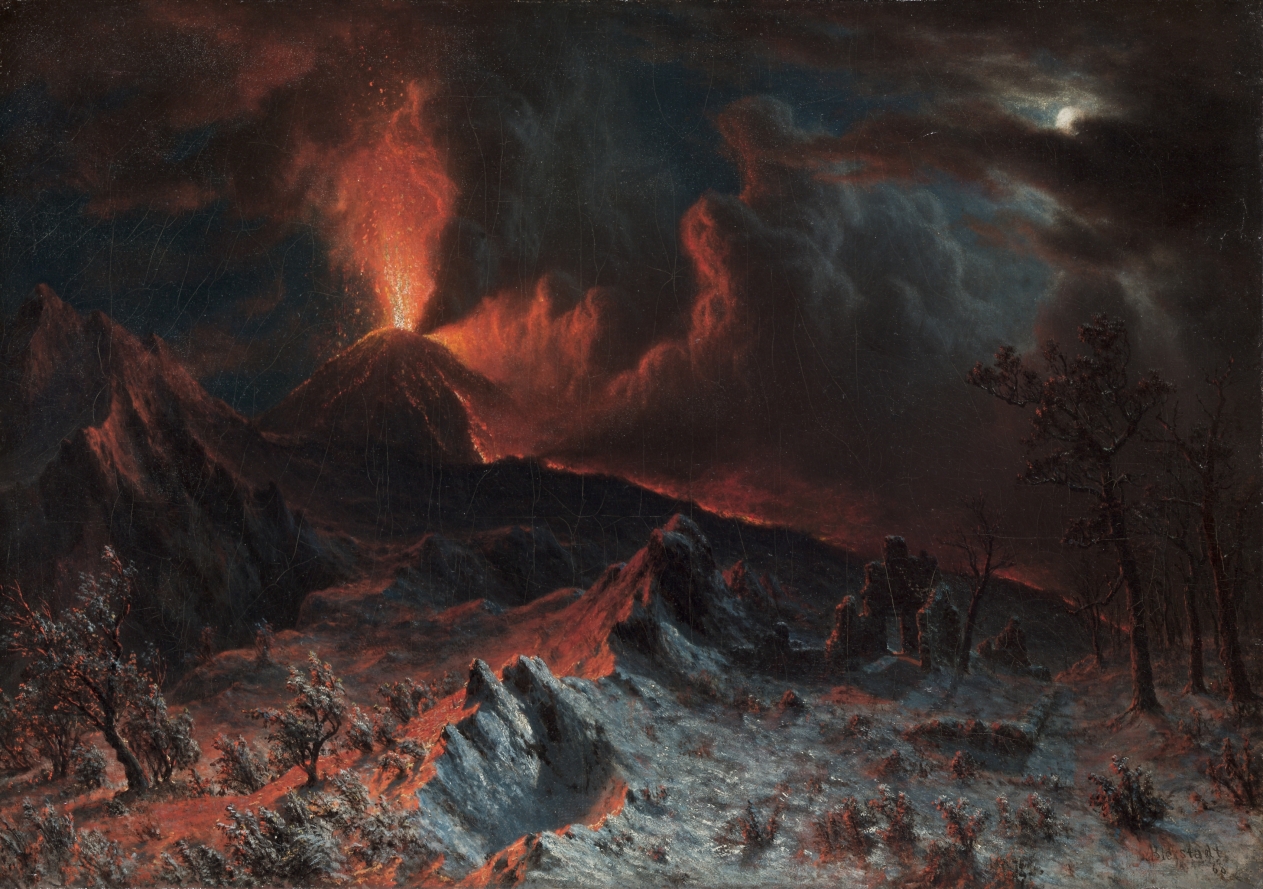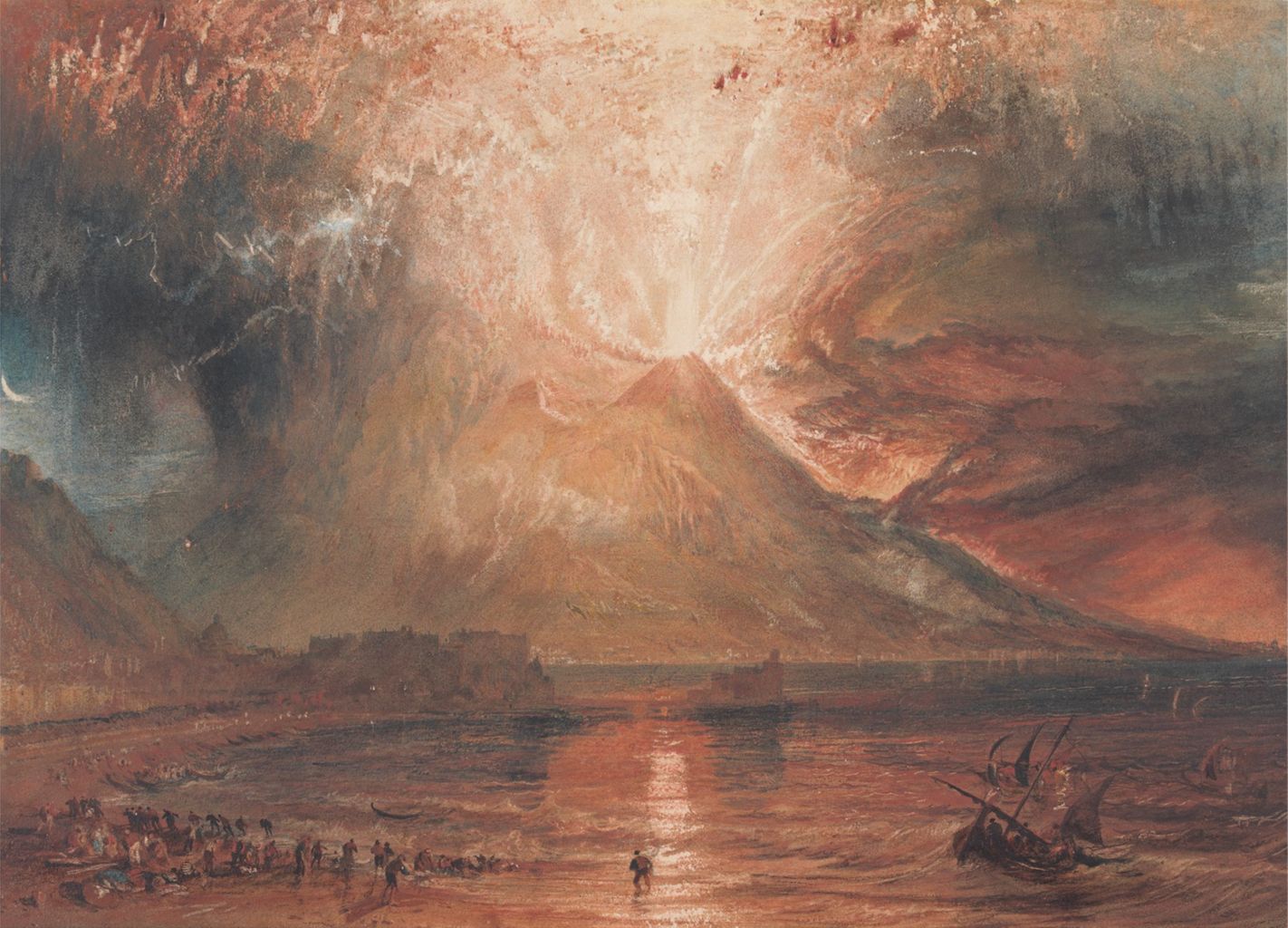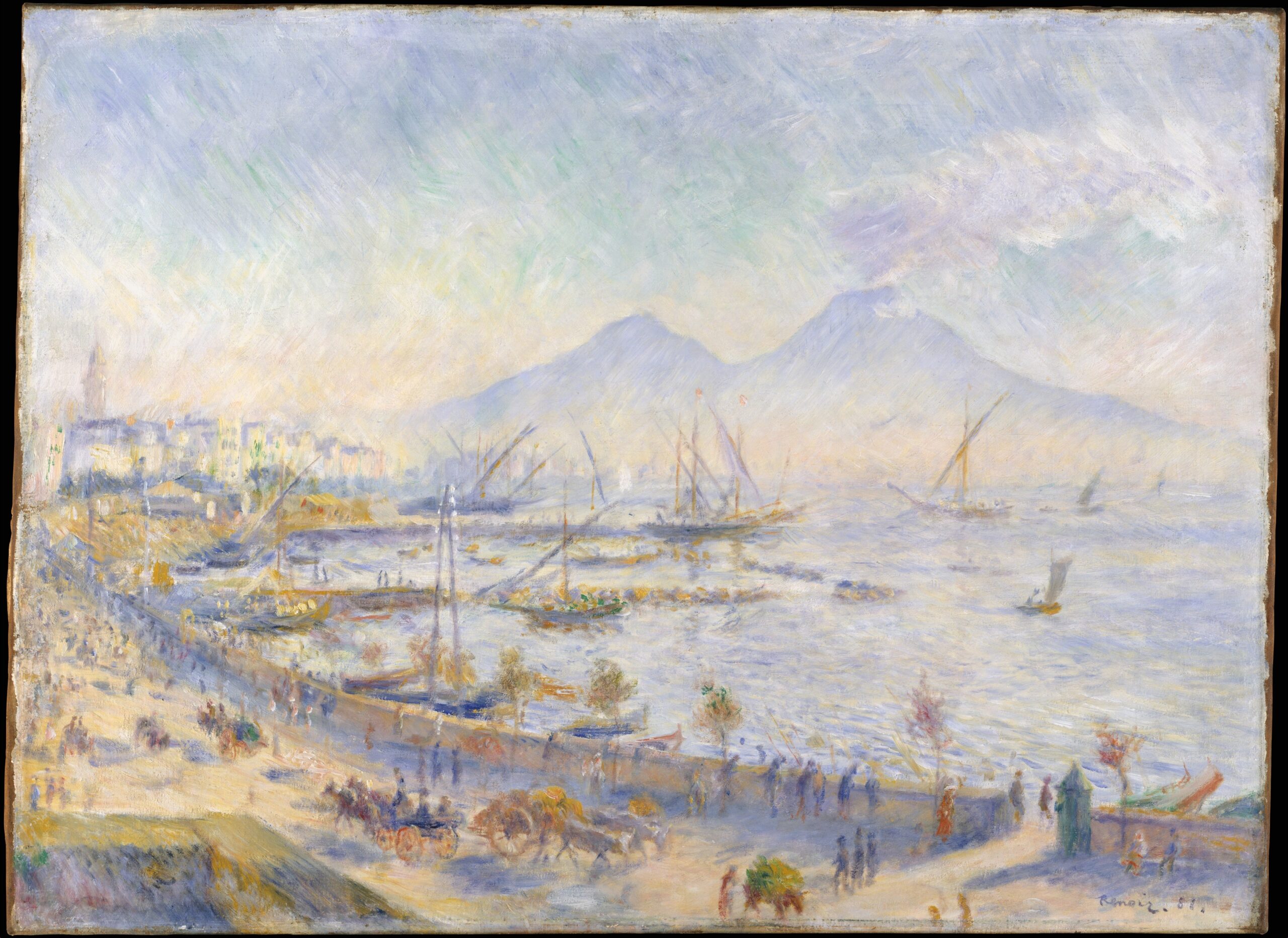Mount Vesuvius, 1985

Andy Warhol,
Mount Vesuvius,1985
acrylic and silkscreen ink on linen
78 × 82 in. (198.1 × 208.3 cm.)
The Andy Warhol Museum, Pittsburgh; Founding Collection, Contribution The Andy Warhol Foundation for the Visual Arts, Inc. © The Andy Warhol Foundation for the Visual Arts, Inc.
1998.1.3177
Warhol created the Vesuvius series in 1985 for Lucio Amelio, an Italian art dealer and curator. Amelio commissioned the works for display at the Museo di Capodimonte in Naples, which was better known for displaying masterworks by Botticelli, Raphael, Titian, and Caravaggio. The corresponding exhibition catalogue included the statement from Warhol: “I painted each Vesuvius by hand, always using different colors so that they can give the impression of having been painted just one minute after the eruption.” This version, entirely black and white, highlights Warhol’s return to painting with its expressive brush strokes. It is a rare example of Warhol capturing motion in his two-dimensional works. Vesuvius, a volcano notorious for its destruction of Pompeii in 79 CE, and continued eruptions since, has been memorialized by artists throughout history including Albert Bierstadt, Pierre-Auguste Renoir, and JMW Turner to name a few.
View related artwork

Albert Bierstadt (American, 1830–1902),
Mount Vesuvius at Midnight, 1868
Oil on canvas
16 3/4 x 23 7/8 in (42.6 x 60.7 cm)
The Cleveland Museum of Art, Gift of S. Livingstone Mather, Philip Richard Mather, Katherine Hoyt (Mather) Cross, Katherine Mather McLean and Constance Mather Bishop
1949.541



